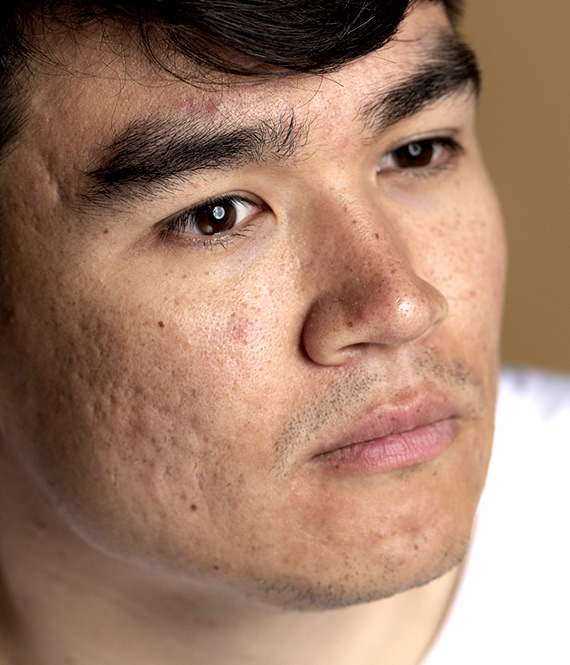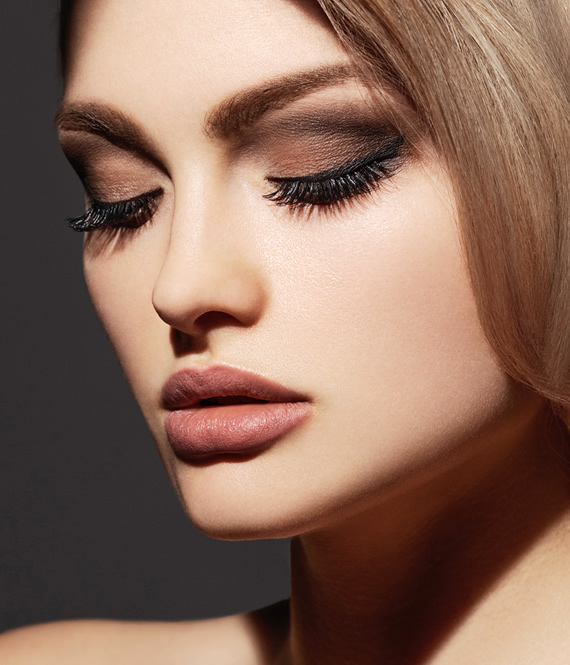
7 Best Treatments For Atrophic Acne Scars
We recommend helpful products in our articles. Read our full disclosure here. The content on this website is not intended to be a substitute for professional advice, diagnosis, or treatment.
Atrophic acne scars represent a common yet challenging aftermath of severe acne, characterized by the loss of skin tissue, leading to indented scars on the skin surface.
These scars occur when the skin fails to regenerate tissue, leaving behind depressions or hollows.
The root cause lies in the inflammatory process of acne, where collagen destruction and insufficient repair mechanisms in the dermis layer result in these visible indentations.
The treatment of acne scars is not merely a cosmetic concern but a necessity for many individuals.
The psychological and physical impacts of these scars are profound, often leading to decreased self-esteem, social withdrawal, and even depression.
The visible nature of these scars, especially on the face, can significantly affect one’s quality of life, underscoring the importance of effective treatment strategies.
Types of Atrophic Acne Scars
Ice Pick Scars
These are narrow, yet deep scars that extend into the dermis.
The challenge in treating ice pick scars lies in their depth, making them resistant to many surface treatments.
Boxcar Scars
Compared to ice pick scars, boxcar scars have a broader base with defined edges.
Their depth varies, and they are easier to treat than ice pick scars due to their shallow depressions.
Rolling Scars
Characterized by their rolling or undulating appearance, these scars are caused by fibrous bands of tissue that develop between the skin and subcutaneous tissue.
The challenge in treating rolling scars lies in their diffuse nature, requiring treatments that can address these fibrous bands effectively.
Factors Influencing Treatment Choice
The severity of scarring dictates the aggressiveness of the treatment approach.
Deep, extensive scars often require more invasive treatments compared to mild scarring.
Skin type also plays a crucial role; darker skin tones are more prone to hyperpigmentation and keloid formation, influencing the choice of treatment.
Furthermore, the patient’s health and history, including allergies, skin sensitivity, and previous treatments, must be considered to tailor the most appropriate and safe treatment plan.
Overview of Treatment Options
The landscape of treatment options for atrophic acne scars is diverse, catering to the wide range of scar types and individual patient needs.
These treatments range from less invasive options suitable for mild scarring to more intensive procedures for severe cases.
Each method has its mechanisms of action, benefits, and considerations, aiming to improve skin texture, appearance, and overall skin health.
Topical Treatments
Topical treatments are often the first line of defense against mild scarring.
These include retinoids, which accelerate cell turnover, reduce pigmentation, and stimulate collagen production.
Antioxidants and peptides are also used for their skin-repairing and anti-inflammatory properties.
While less aggressive, topical treatments require consistent application and can serve as an adjunct to other procedures, enhancing overall results.

Chemical Peels
Chemical peels involve the application of a chemical solution to remove the damaged outer layers of the skin, promoting regeneration and smoother texture.
The depth of the peel—ranging from superficial to deep—depends on the scar severity and skin type.
Trichloroacetic acid (TCA) peels and alpha-hydroxy acid (AHA) peels are commonly used, each suited to different scar types and patient skin profiles.
This method can significantly reduce the appearance of scars by encouraging new, healthy skin growth.
Laser Therapy
Laser therapy employs focused light to remove or remodel scarred skin.
CO2 lasers and fractional lasers are particularly effective, the former offering deep resurfacing for more severe scars, and the latter targeting smaller areas with less downtime.
These technologies promote collagen production beneath the skin surface, leading to the reduction of scar depth and a more uniform skin texture.
Laser therapy’s precision allows for targeted treatment of scars without significantly affecting surrounding tissue.
Microneedling
Microneedling, also known as collagen induction therapy, involves the use of fine needles to create micro-injuries in the skin.
This process triggers the body’s natural wound healing processes, resulting in increased collagen and elastin production.
Microneedling can improve the appearance of scars, fine lines, and overall skin texture with minimal downtime.
It’s often combined with topical treatments to enhance the penetration and effectiveness of active ingredients.

Dermal Fillers
Dermal fillers are injectables that can fill in depressions and smooth out the skin’s surface, offering immediate improvement in the appearance of atrophic scars.
Fillers made from hyaluronic acid, poly-L-lactic acid, or calcium hydroxylapatite can provide temporary to long-lasting results, depending on the product used.
This treatment is especially useful for rolling scars and some types of boxcar scars.
Subcision
Subcision is a surgical technique designed to release the fibrous bands causing rolling scars and certain boxcar scars.
A small needle is inserted beneath the skin to cut these bands, releasing the tension and allowing the scar to lift.
This method can be used as a standalone treatment or in combination with other treatments like fillers or laser therapy for enhanced results.
Platelet-Rich Plasma (PRP) Therapy
Platelet-Rich Plasma (PRP) therapy involves injecting a concentration of the patient’s own platelets into the scarred area to promote healing and stimulate collagen production.
This treatment can improve skin texture and scar appearance and is often used in conjunction with microneedling or laser treatments to maximize healing and rejuvenation.
Each of these treatment options offers unique benefits and considerations, emphasizing the importance of a personalized approach based on the individual’s skin type, scar severity, and treatment goals.
Consulting with a dermatologist or skincare professional is crucial to determine the most appropriate treatment plan for effective and safe scar management.
Comparative Analysis of Treatments & Side Effects
The effectiveness of treatments varies, with laser therapy and microneedling often showing significant improvement in skin texture and appearance.
However, studies indicate that a combination of treatments may offer the best results.
Side effects can range from temporary redness and swelling to more serious complications like infection or pigment changes, especially in darker skin tones.
The cost of treatments is also a significant consideration, with surgical options and laser therapy being more expensive than topical treatments or chemical peels.
Preventive Measures and Maintenance
Preventing acne and minimizing scarring involves a consistent skincare routine, incorporating gentle cleansing, moisturizing, and the use of sunscreen to protect the skin from damage. Lifestyle changes, such as a balanced diet, adequate hydration, and stress management, can also reduce the risk of severe acne and scars.
Early intervention by a doctor is crucial in managing acne before it leads to scarring, highlighting the importance of professional guidance at the onset of acne symptoms.
Conclusion
Atrophic acne scars require a personalized treatment approach for the best possible results.
Understanding the types of scars, the factors influencing treatment choice, and the range of available options is crucial for effective management.
While the impact of these scars can be significant, advances in dermatological treatments offer hope and improvement for those affected.
Consulting with a dermatologist to devise a tailored treatment plan is paramount in achieving the best possible outcomes, combining professional expertise with preventive measures to address both the physical and psychological aspects of acne scarring.
"We love to research problems, examine studies, analyze solutions, and share with you ideas that make life healthier. You can learn about us and our editorial standards here. Have suggestions or feedback to share? Send us a message!."













Leave a Comment